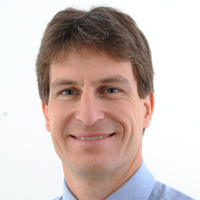The third stop on our renewable energy tour of Germany was the state of North-Rhine Westphalia— the industrial, steelmaking, and coal mining center of the country—where we learned about the economic and social ramifications of Germany’s transition away from coal to renewable energy, and what lessons might be applied to the U.S.
Phasing out Coal
While Germany’s decision in April 2011 to accelerate the phase-out of nuclear power by 2022 was widely publicized following the Fukushima crisis in Japan, their plans to phase out coal are less well known. Coal provided 45% of Germany’s electricity in 2010, which was similar to coal’s U.S. market share in that year.
Coal production and employment has been steadily declining for over a half a century due primarily to the availability of cheaper foreign coal and environmental concerns. According to Regional Association Ruhr, coal mining in the region reached its peak annual production of 130 million tons in 1939 during World War II. Coal mining employment peaked at nearly 500,000 in 1957 and has since declined to less than 33,000 (a trend that has also occurred in the U.S.). From 1960 to 2009, the number of coal mines also declined from 125 to 3.
To help mitigate the impacts on the labor market, Germany heavily subsidized the industry and local communities to the tune of 128 billion Euros between 1959 and 2005. In 1996, Germany started to reduce the subsidies to coal, which led to their decision in 2007 to completely phase out black coal mining by 2018.
New Economic Opportunities
During our trip, we learned about how the region is attempting to diversify its economy to make up for the decline in coal mining and steelmaking. For example, we travelled to Essen to visit Zollverein, one of the largest coal mines and coking plants in the region that was converted into a museum, recreation park, and UNESCO World Heritage site in 2001. Today, about 1,000 people work at the facility—about the same number that were once employed by the coking plant. In 2010, Zollverein had an estimated 2 million visitors.
Rolf Fliss, mayor of Essen and member of the German Green Party, gave us a tour of the facilities. He described with great pride how his father had worked in the mines and how important the Zollverein museum has been to local residents to maintain a sense of cultural identity, community, and hope for the future.

Rolf Fliss, Mayor of Essen (in the middle wearing a tie) and members of the Blue-Green Alliance and Heinrich Böll Foundation in front of one of the mining shafts at the Zollverein museum.
In Gelsenkirchen, Dr. Wolfgang Jung gave us a tour of Science Park Gelsenkirchen. In 1995, an 11,000-square-meter facility with offices and research labs was built on a brownfield site that was used for coal mining and steel production from 1850 to 1984. He told us that 25 clean energy and high-tech companies with over 400 employees were currently housed at the site. He also brought us up on the roof of the facility to see their 210-kilowatt solar PV array. Known as “The City of the Thousand Fires” in 1929, Gelsenkirchen is now rebranding itself as “The City of a Thousand Suns.”
We also visited Kenersys, a global wind turbine manufacturer in Münster, and nkt cables in Cologne, a company that manufactures transmission lines and cables for solar farms, onshore and offshore wind farms, and many other applications.
My experience in North-Rhine Westphalia gave me hope and a glimpse of how we might be able to transition away from coal to renewable energy in the U.S. The places I visited reminded me of states like Pennsylvania, Ohio, and Illinois that have already experienced a significant decline in coal mining and other industries, but have tremendous potential to attract new clean energy businesses. These and other coal mining states like Wyoming and West Virginia also have an excellent potential to create new jobs by generating electricity from wind, solar, and other renewable energy sources.


